Isla Fuerte: unknown island paradise

A version of this post appeared in The City Paper in 2016
Isla Fuerte is the least known and lesser visited of Colombia’s Caribbean islands, perhaps because of its location off the coast of Cordoba, far from the main tourist hotspots of Cartagena and the Rosario Isles, 200 kilometres north. Not that it is particularly hard to get to. In fact the 11-kilometer voyage from the mainland by small open boat takes 45 minutes, depending on sea conditions. Mornings are usually calm but the afternoon swell can send the occasional wave washing over the bows. Landlubbers are advised to take the early boat.

The egg-shaped island covers just three square kilometres but is surrounded by coral reefs, and ticks many other boxes for Caribbean idyll: palm trees waving in a soft ocean breeze, sandy beaches, clear water, happy locals in small boats, grilled lobster, cold beers and a cave where ubiquitous Welsh pirate Henry Morgan hid some treasure.
Being Richard Branson
What Isla Fuerte lacks is mass tourism, which means during off-peak times you have a good chance to get the whole beach to yourself and can lie back in your hammock with a cold beer imagining you are Richard Branson.
It also has an unexpected highlight in the form of two exceptional trees, as I am about to find out on a foot tour (there are no cars on the island) with our guide and hotel owner Horacio, a dentist from Medellin who first came to Isla Fuerte in 1976.
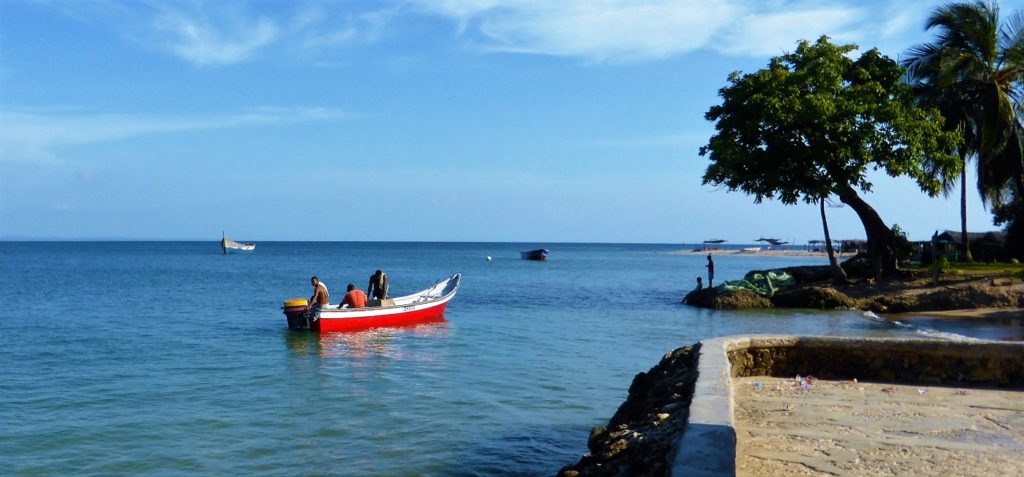
The tree that hugs back
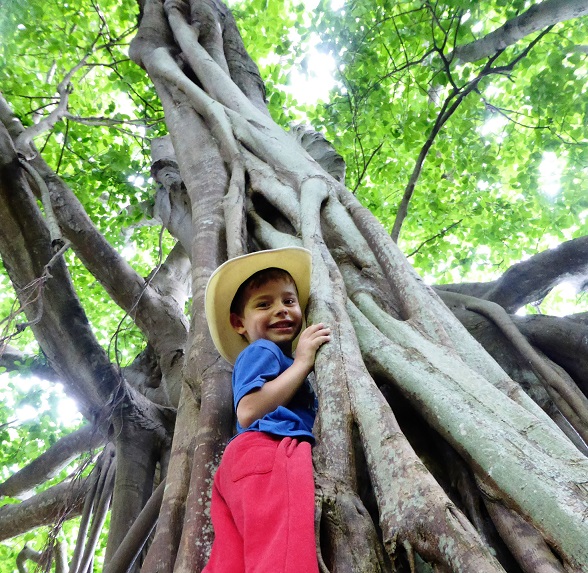
The first tree we visit, in a cow paddock in the centre of the island, is a massive strangler fig known locally as el arbol que camina, or the ´walking tree’, for its ability to send down aerial roots from its branches and grow out horizontally. In this case the ficus, a single specimen but with a multitude of sinewy trunks, covers an astonishing 1000 square metres with a lush green canopy.
Look closely though and something unsettling is going on. The fig finds its feet by enveloping other trees in a dense woody latticework, like some creature dreamed up by HR Giger with branch-hugging tendrils and twisted roots erupting from the bowl of a slowly-dying host tree, a kind of slo-mo botanical Alien. Its dappled shade is no place to linger.
The tree that cries
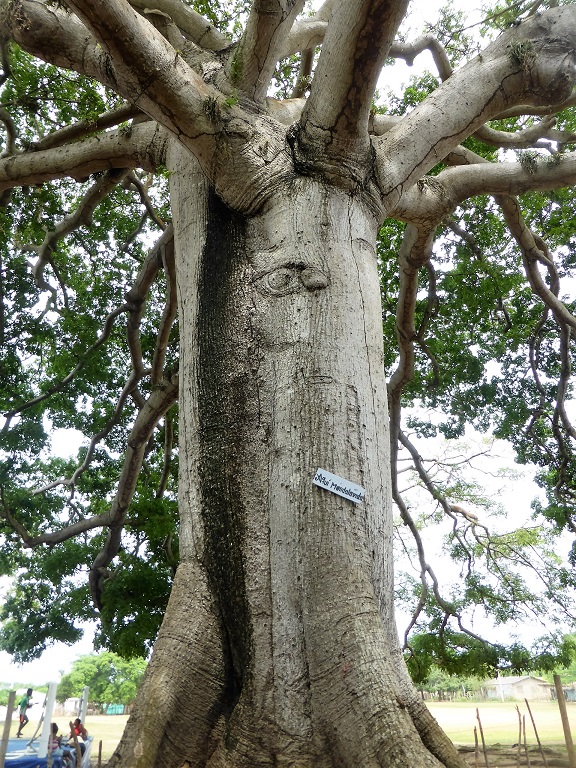
The next tree we visit, just ten minutes stroll away (and hopefully far enough from the creepy clutches of the strangler fig) is an immense bonga tree which stands tall and proud on the highest point of the island. I have seen many of these large trees –also known as ceibas – during my travels, but none quite like this with a four-meter diameter trunk and foliage shading 2000 square meters (the tree can be clearly seen on Google Earth). I stand leaning against its grey trunk scanning the huge branches radiating from the crown above.
Ceibas are revered wherever they grow in the world and this one is no exception. Local stroll by then stop to rest and chat in its shade,sitting on a gnarled root. Schoolkids use its lower branches as a hammock, lying four a time cradled in its protective arms. For the Afro-Colombian islanders it is clearly both the spiritual centrepiece and the literal crossroads of the island, as it was I imagine for the Caribe people who inhabited the island in pre-colonial times.
People in the village come to tell the tree their problems, says Horacio, and ‘the tree has heard so many sad stories it cries,’ he tells us, and sure enough high on the trunk is an eye-shaped whorl with a teardrop in the corner. The tree is estimated to be 2,500 years old and was enough of a feature 500 years ago to be recorded in the chronicles of Spanish conquistador Rodrigo de Batistas, who sailed out in 1503 to explore west along the coast, discovering the River Magdalena and what we now know as Panama.
‘Heere Theyre Be Canibals ‘
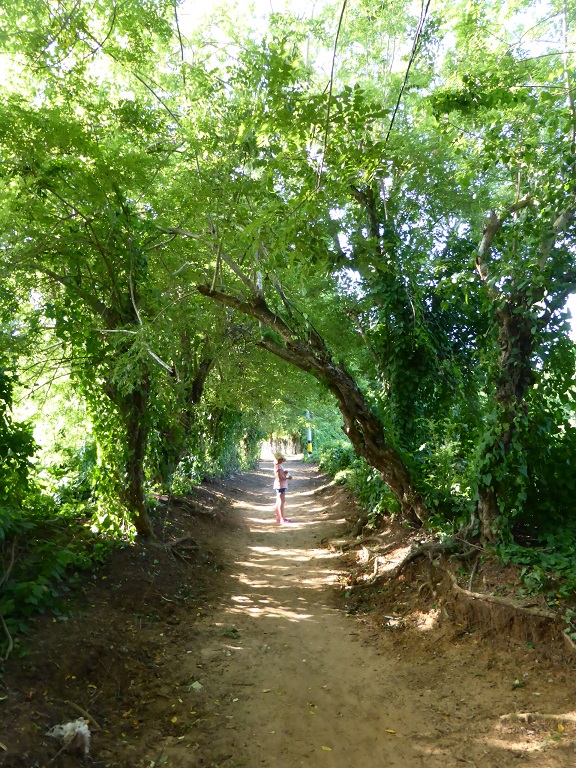
De Batistas was known as the noble conquistador for the modicum of respect he showed the indigenous people he encountered, and he had friendly dealings with those he met is Isla Fuerte, who were involved in salt production.
Later European arrivals were less welcome. In 1513 Francisco Pizarro, who would go on to ruthlessly conquer the Incas in Peru, tried to land to get water for his ships but was repelled by the islanders´ arrows, which might explain the islands name as ´stronghold´. To add to Pizarro´s miseries one of his ships was lost with all hands on a nearby reef and his own brigantine had its rudder swiped off by the ‘tail of a giant fish’.
The islanders´ resistance could be explained by the fact they had become the target for early slavers. The Spanish crown originally made some effort to protect the New World natives from the depredations of the conquistadors, and slaving was banned. But then came back stories of the cannibal practices of some Carib tribes which shocked the regal powers (they had never come across anthropophagy before) which after consulting with the church decided that natives eating human flesh needed to be enslaved to save their souls.
This of course meant the crafty conquistadors could now accuse any tribe of cannibalism (the word itself comes from the Caribs) then enslave them for profit. But in those days any gain was up for grabs and the Spanish Main, as the tierra firme coastline of Caribbean would be called, would be bitterly contested by other European powers vying to wrest some New World riches for themselves.
The mystery of the cave
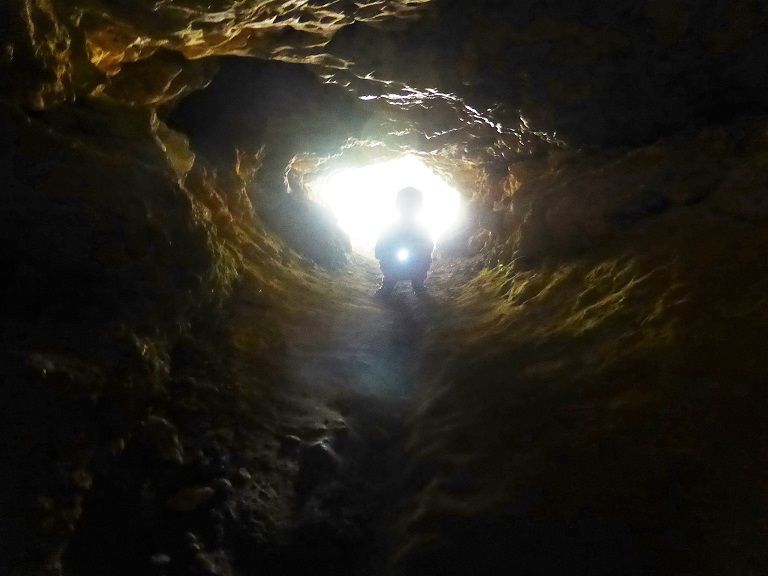
This brings us to the next stop on the tour. In a coconut grove in the middle if the island is a limestone cave where the 17th-century buccaneer Sir Henry Morgan was supposed to have stashed some loot raided from some hapless Spanish treasure galleon along the coast. Anyone travelled in the Caribbean knows that the Morgan seems to have been here, there and everywhere leaving hidden treasure and a multitude of offspring in his wake, so it is not surprising that Isa Fuerte has its own cave, though in this case a low muddy tunnel going 75 metres back into the ground. Horacio doubts Morgan was ever really there, explaining that in the Caribbean ´Morgan is a general term used for any pirate´, perhaps in the same way we say ´Hoover´ for vacuum cleaners.
This didn’t stop two treasure hunters moving to the island in the early 1900s to excavate in the cave after finding an old treasure maps in their attic in Bogota. According to a local tale they spent the next 25 years of digging until one day they mysteriously disappeared. ‘They went in the cave but never came out,´ says Horacio, who relates this morbid detail only after I had myself crawled in and out of the dark hole. ´Maybe they found the treasure and sneaked off in the night?’, I suggest, hoping the story might have had a happier ending. ‘More likely they fell into an underground abyss,’ he counters.
The whole story seems fishy. I mean how long did they think Morgan spent burying the treasure that it took them 25 years to dig up just dirt? Or maybe those afflicted by gold fever rarely think logically and just keep digging themselves a deeper hole until one day the bottom falls out.
During a tour by boat around the island I realise a similar lack of logic seems to infect modern-day bounty-hunters, in the form of wealthy businessmen (mostly lawyers and architects it seems) who have bought up most of the islands coastline and built beachfront mansions which lie empty most of the time.
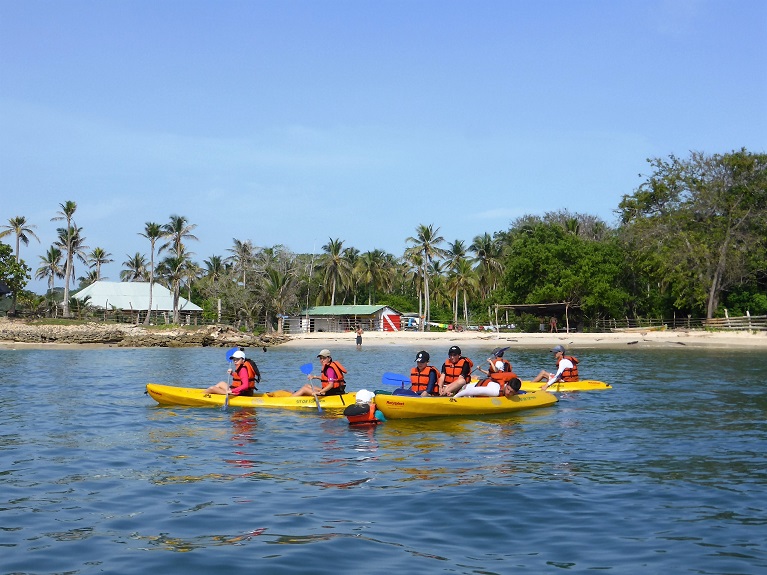
´The crazy thing is that after spending all that money most of them only visit two week a years, it doesn´t make a lot of sense really,´ explains our boat driver as we navigate the reefs at the north end of the island. Like most Afro-Colombian islanders he lives in Puerto Limon, the fishing village at the sheltered south end of the island.
Some of the islands beaches, on the west side, are still wild though accessible by tracks from the main dock at Puerto Limon. The island is only a few kilometres across so anywhere can be reached within an hour´s walking along shaded tracks used mostly by villagers with donkeys fetching water from the few wells. Like much of Colombia’s Atlantic coast the area is drought-prone, has no piped water supply, and villagers collect rainwater or forage for water from wells and stagnant ponds. Only the cachacos (as the islanders call all outsiders) with mansions have the money to invest in borehole wells and pumps.
The disparity between the cachacosand the islanders does not seem to generate bad feelings, though. Horacio our cachaco host is warmly welcomed everywhere we go, after 40 years on the island he is almost an islander. And everywhere I go someone is trying to sell me land. ´I have 30 hectares if you are interested, ´ says the woman in the kiosk where I buy a cold drink. Another selling fried fish on the west coast offers me 16 hectares with beach frontage. ‘We can sign the papers while you are here´. I politely decline, having been informed by Horacio – and seeing the evidence with my own eyes on the trip around the island – that any investment might literally get washed away. Bits of Isla Fuerte are disappearing into the sea.
Holiday Homes from Hell
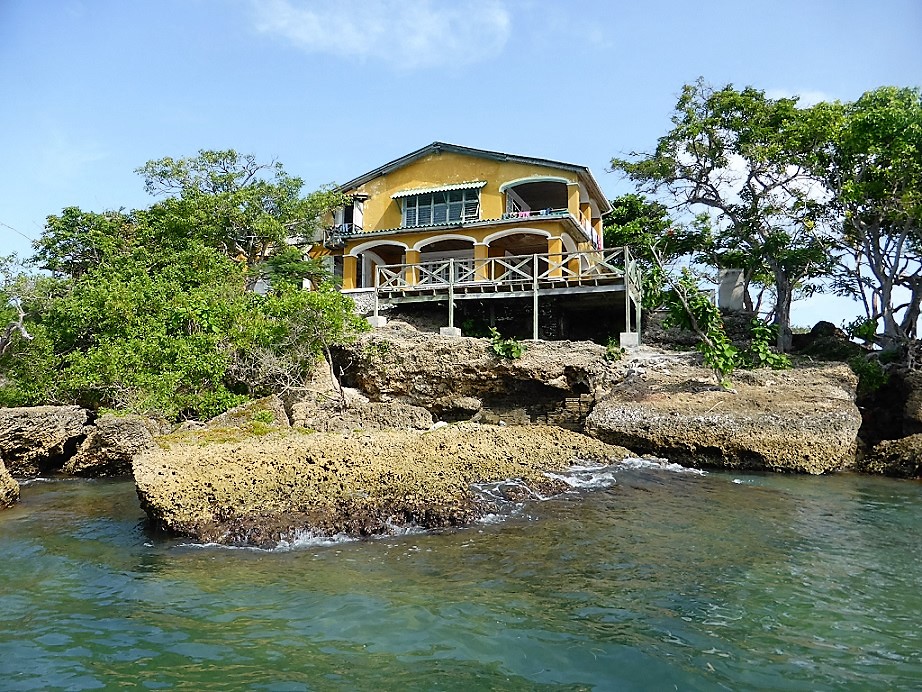
On the north side of the island the prevailing swells –and occasional large storm – are eating away the land with whole beaches and coconut groves having disappeared in recent decades. Now the ocean is undermining the holiday homes of the rich and famous perched for dramatic effect close to the remaining seafront. The irony is that the wealthy owners, while trying to bag their own slice of island paradise, might end up one night in a watery hole just like the hapless excavators of Morgan´s Cave.
If they do it will be partly their own fault. Scientific studies suggest the real estate frenzy has hastened the removal of mangrove forests, the islands natural coastal protectors, which coupled with rising sea levels has left the island very exposed. According to some theories the construction of artificial breakwaters thrown up to protect their properties can actually make erosion worse by concentrating the wave energy. One better solution might be artificial concrete reefs placed offshore to provide a barrier and promote natural reef growth.
It is these reefs, and the good diving they offer that also provide the main tourist attraction on the island, with a scuba centre on the island and many divers making day-trips to the reefs from the mainland. I never make it diving but do don mask and snorkel to enjoy the coloured fishes and eels in the shallows.
Small island, big wonders

Back on the beach a donkey brays which is the cue for another comment from Horacio: ´That donkey was born at 11am,´ he says, checking his watch. ´Here on the island donkeys bray every day at the exact hour they were born.´
I mentally struggle to digest this titbit of donkey lore. ´But surely a donkey brays many times a day so there is a high chance it brays at the time, or close to, the time of its birth,’ I suggest. ´Yes, but they primarily bray at the time of their birth, it’s a fact,’ says Horacio. I study his face for any sign he is winding me up. But, no, he is serious.
Later, lying in my hammock watching the wafting palm fronds weave patterns against the night sky, I decide to give Horacio´s donkey theory the benefit of the doubt. Surely on this small island of big wonders where trees cry, caves swallow up treasure-hunters and giant fish beat back ships, I can believe that the donkeys bray every day to mark their birth hour.
At least until someone proves otherwise.
PRACTICAL STUFF

When to visit: any time of year, best on a weekday if you want tranquillity. Could get crowded in January, high season. Two days on the island are more than enough. For diving weekends will be better as diving groups will be present.
Getting there: Get to Lorica, Cordoba (last place with cash machines, in Olympica Supermarket). Can come via cities of Monteria (airport) or Sincelejo. From Lorica get local bus or share taxi to the fishing village of Paso Nuevo, about 1 hour from Lorica.
If driving, get to Lorica then follow signs for San Bernado del Viento and Moñitos. Paso Nuevo is approximately 20kms after San Bernado (ask the locals for the crossroads as it is off the main road). In the village you will find places to park the car (US$3 for 24 hours) and within walking distance the beach where fishing boats head to the island.
Boats go every few hours to the island, and cost US$5/person, but the locals will try and convince you you to hire your own boat (US$50). Just hang out until a local boat is leaving and jump on and pay the passenger fee. Some boats have shade and lifejackets, others dont bother. Sea is calmer in am. Journey takes 30 to 45 minutes depending on size of boat and seas. Boat can drop you at the beach of your hotel or at the main dock at Puerto Limon, if you have nothing booked.
There is a hostel in Paso Nuevo.

Accommodation: basic but clean, with fans and mossie nets, generally overpriced compared to mainland. There are run-down hotels on the beach, eco-lodges, basic cabins, rooms to rent in Puerto Limon and free camping on the west coast beaches (not sure if it is legal or not, but people do it). We stayed at the Mar Abierto which had very basic rooms and simple food, three meals a day for US$50 per person – was overpriced so maybe look for cheaper options. There is also an upmarket Ecolodge and dive centre , check the link for prices. There is La Playita Hostal, has rooms for US$14/night with breakfast. Remember if you rock up in Puerto Limon and look for somewhere you need to walk on the island (never far) and carry your gear, or hire a boat to drive you around the island.
Food; mostly fried fish, but some chicken and meat. There are usually stalls with cold drinks and fried fish on the more popular beaches, Some basic restaurants in town, and many beer halls.
Things to do: swim, surf, chat to the locals, rent sea kayak, stroll, relax, take a boat around the island, visit the Bonga and strangler fig tree,
More info:
- for surfing info check the La Playita website
- for diving see the Naui Dive Centre
